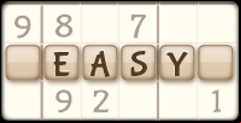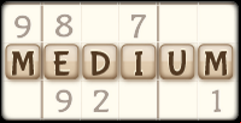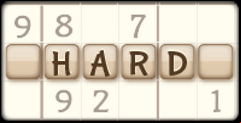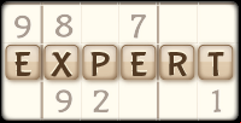Sudoku Swordfish Strategy: A Guide to Solving Complex Puzzles

Sudoku is an old game that dates back to the 18th Century where it gained inspiration from a game called Latin Squares. Since then, it’s become one of the most popular games on the planet, amassing over 30 million players every day. People enjoy the puzzle element of this game, as well as how easy it is to the time while playing.
Nevertheless, it’s common to encounter the odd sudoku puzzle that’s hard to crack. As such, you may look at adopting more advanced strategies to avoid these sticky situations and solve more puzzles. On that note, today’s blog post will center around the swordfish sudoku strategy. It’s one of the most widely used by sudoku experts, so let’s see what it entails.
Understanding Swordfish Basics
The swordfish sudoku strategy is a complex method of identifying patterns to rule out where a number will lie on the grid. You focus on one digit at a time with this approach, and the goal is to look for the following:
- 3 rows or 3 columns where the number can only fit in 2 or 3 cells
- Each cell within the rows/columns must connect via another row/column

n = the possible number
If the description sounds confusing, then hopefully, this diagram makes it a bit easier to understand. The highlighted rows, the number you’re focusing on, can only appear in three places within each row. As you can see, the same number can also only appear in three of the connecting columns.
This forms the basic swordfish pattern, but it could easily manifest anywhere on the grid when you have three rows or columns where a number can only fit in 2 or 3 cells, and the rows/columns are connected.
Identifying Swordfish Patterns
, this is an advanced strategy, so it’s bound to be quite complicated. The trick is learning how to identify swordfish patterns, which can be done by following these principles:
- Find Three Rows or Columns - Keep an eye out for any three rows where your designated number only appears in two or three cells.
- Look For Alignment - When working with rows, the cells containing your number must align with exactly three columns. If you look for a pattern using columns, then each number must align with exactly three rows.
In other words, find your three rows/columns with your designated number, and then look to see if these numbers align via columns/rows. The more you do this, the more it starts to make sense, and you notice the patterns.
Applying The Swordfish Strategy
Let’s look at some practical applications of this strategy during a sudoku puzzle. The following are screenshots from Sudoku.com that do an excellent job of visually representing how to find this pattern, what it looks like, and what it means for your game.

For the sake of this explanation, the number we’re focusing on is 6. In the first image, you’ll notice the player has identified that 6 only appears twice in the first, sixth, and ninth rows - and that all of these possible 6s align in three columns.
In turn, this means the 6s could only appear in either of these two formations:


Therefore, you can go around the three columns in your swordfish pattern and remove any other notes where you’ve thought a 6 could go, as demonstrated in the final image:

You’re down to six possible places for a 6 to go rather than twelve!
Common Mistakes To Avoid
The biggest mistake to avoid is thinking that every puzzle and grid will have a swordfish pattern - this isn’t the case.
It’s a rare thing to find, and if you’re using the easy or medium puzzles at 247Sudoku, then you’ll never need the swordfish technique. It’s only for the hardest puzzles, and even then, you might not find one. So, don’t get annoyed if you can’t pinpoint one!
The second mistake is to remove all of your annotations across the grid for the designated number. A swordfish pattern helps you nail down the possible positions for a number within certain rows or columns that form part of the pattern. You’ll notice in our example above we didn’t cross out the annotations for 6 in any cells that weren’t part of the right rows/columns.
Better Alternatives To The Swordfish
Fundamentally speaking, the swordfish strategy is one of the worst in sudoku because it’s so rare to come across. If you can’t find the right pattern - and are always one cell away - then it’s better to adopt more conventional strategies, such as:
- X-Wing
- Y-Wing
Both offer a bit more flexibility and freedom, and you’re more likely to spot patterns for each across a larger spectrum of puzzles.
How To Practice Your Swordfish Sudoku Strategy
The best way to practice this strategy is by loading up some games of Sudoku. You can do this at 247Sudoku, though we recommend you set the difficulty to “Expert.”
From there, start your game and make annotations to work out where numbers could go. Fill the entire grid with annotations before you look for a swordfish pattern. Go through the steps mentioned earlier to spot where a possible swordfish will lie. It’s better to begin with the rows - look for any three rows where your chosen number appears 2 or 3 times. See if these cells also line up across columns. If so, you’ve found a swordfish and can now work on removing some of the other annotations from the grid.
When used correctly, the swordfish strategy can enhance your puzzle-solving skills and help you eliminate lots of possibilities across the grid. Don’t forget that this is a very advanced technique - if you’re struggling to solve easy, medium, or some hard sudoku puzzles, then it’s probably not the best thing for you to try!
Sudoku Levels
Seasonal Sudoku Games
More Games
Sudoku News
Disclaimer
DISCLAIMER: The games on this website are using PLAY (fake) money. No payouts will be awarded, there are no "winnings", as all games represented by 247 Games LLC are free to play. Play strictly for fun.





































